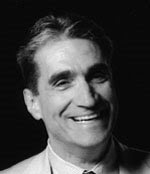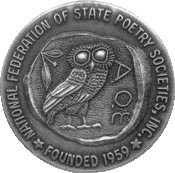Nick Carbo wrote this essay on Filipino poetry; the essay was published in the Encyclopedia of Modern Asia:
A BRIEF OVERVIEW OF PHILIPPINE POETRY
The history of Philippine poetry can be described in four major literary periods: Pre-Colonial (before 1521), Spanish Colonial (1521-1898), American Colonial (1898-1946), and Contemporary (1946-present). A strong indigenous oral tradition is interwoven with the Spanish and American colonial influences of culture and language. Poetry has been written in Tagalog (the national language) and in the 87 different regional dialects, as well as in the Castillian Spanish of Miguel de Cervantes and Lope de Vega, and the American English of Walt Whitman and Mark Twain.
PRE-COLONIAL
An indigenous oral tradition of bugtong (riddles) and sawikain (proverbs) played a central part of community life in villages and settlements of pre-colonial Philippines. Short four line poems called tanaga evolved from these oral traditions. Each line contained seven or eight syllables and at the heart of the poem was a cryptic metaphor called a talinghaga. Popular folk musical verse was divided into several categories: the diona, talindao and auit (songs sung at home); indolanin and dolayanin (street songs); hila, soliranin and manigpasin (rowing songs); holohorlo and oyayi (cradle songs); ombayi (songs of sadness); omiguing (songs of tenderness); tagumpay (triumphant songs); dopayanin (boat songs); hiliriao (drinking songs); and diona (wedding songs). Through these verses the local history, politics, and culture was passed on from generation to generation. The most skilled poets would memorize epic cycles which took two to four days to recite during all night dramatic performances. Two examples of pre-colonial epics which survive today are Biag ni Lam-ang in Ilocano (a northern Luzon dialect) and Ibalon in Bicol (a southern Luzon dialect).
SPANISH COLONIAL
With arrival of the Spanish colonizers Ferdinand Magellan (1521) and Miguel Lopez de Legazpi (1571) came priests and their tradition of European Catholicism. Satanas (Satan) first appeared in Tagalog poetry and the Christian themes of sin, guilt, and retribution became central concerns of the native population. In 1610 Tomas PINPIN, a Filipino poet working for the Dominican printing press in Bataan, (a town outside Manila) wrote a book called Librong Pagaaralan nang manga Tagalog nang Uicang Castila (A Book in Which Tagalogs May Study the Spanish Language). In this book Pinpin inserted six auit (songs) which had alternating Spanish and Tagalog lines. This type of bilingual poetry was written by a group called the Ladino Poets. Metrical romances called awit or korido were also popular with the literary crowds. The most influential Tagalog romance of the period was the politically cryptic Florante at Laura (1838) written by Francisco BALTAZAR, also known as BALAGTAS (1788-1862). The first book of poetry written in Spanish by a Filipino was Pedro PATERNO’s (1858-1911) Sampaguitas y Poesias Varias (1880) which was printed in Spain. Paterno, along with Marcelo H. DEL PILAR (1850-1896), Jose RIZAL (1861-1896), and Isabelo DE LOS REYES (1864-1918) were literary and political figures living in Madrid called Ilustrados (enlightened ones) working to attain political freedoms for the natives back in the Philippines. The first Filipino female poet to attain outside recognition was Leona FLORENTINO (1849-1884) whose poems were exhibited in the Exposition Filipina in 1887 in Madrid and in the 1889 Exposition Internationale in Paris.
AMERICAN COLONIAL
In 1898 the American President William McKinley announced to the public that it was America’s moral duty to take possession of the Philippine Islands because the Filipinos had to be civilized, educated, and Christianized. After American soldiers “pacified” the native population during the Philippine American War (1899-1902), thousands of American teachers were sent throughout the archipelago to teach the Filipinos the English language. In just a few years English became the privileged form of expression for poets, prose writers, and dramatists. The earliest Filipino poems written in English were published in 1905 in Berkeley, CA in The Filipino Students’ Magazine which was edited by Pensionados (Philippine American government scholars). The first book of poetry written in English Azucena (1925) by Marcelo DE GRACIA CONCEPCION (1895-1954) was published in the U.S. by G. P. Putnam’s Sons, The Knickerbocker Press. The most influential Filipino poet Jose GARCIA VILLA (1908-1997) lived most of his adult life in New York City. His books are Have Come, Am Here (Viking Press, 1942), Volume Two (New Directions, 1949), Selected Poems and New (McDowell, Obolensky, 1958). Another early immigrant Filipino poet is Carlos BULOSAN (1911-1956) who published political poems in American magazines like The New Yorker, Poetry (edited by Harriet Monroe), and Saturday Evening Post. In Manila in 1940, the Commonwealth Literary Prize in English poetry was given to Rafael ZULUETA DA COSTA’s (1915-1990) Like the Molave and Other Poems. Native themes were well represented by local poets like Fernando Ma. GUERRERO (1873-1929), Lope K. SANTOS (1879-1965), Jose CORAZON DE JESUS (1896-1932), Amado V. HERNANDEZ 1903-1970), Alejandro G. ABADILLA (1904-1969), Angela MANALANG GLORIA (1907-1999), and Trinidad TARROSA SUBIDO (1912-1993).
CONTEMPORARY
The declaration of formal independence from America on 4 July1946 brought a sense of a new beginning to the people and poets of the Philippines. A generation of poets who studied in the famed Iowa Writer’s Workshop in the University of Iowa in the 1950s— Bienvenido N. SANTOS (1911-1996), Ricaredo DEMETILLO (1920-1998), Dominador I. ILIO (1913-), and Edith TIEMPO (1919-)—came back to the Philippines with the literary ideals of the American New Criticism. The 1970s and 1980s proved to be a politically aware era for Filipino poets who were writing under the censorship of the dictatorial regime of Ferdinand Marcos (1965-1986). As a reaction to the 1983 assassination of Benigno Aquino Jr., a leading anti-Marcos politician, several poets formed a literary organization called PLAC (Philippine Literary Arts Council) to protest the abuses of the government. One of its leading founders was Alfred A. YUSON (1945-) whose neo-realist books of poems are Dream of Knives (1986) and Trading in Mermaids (1993). Current trends in Philippine poetry are best exemplified by the pyrotechnic imagination of Eileen R. TABIOS (1960-) whose book of poetry Beyond Life Sentences (1998) won the National Book award given by the Manila Book Critics Circle. Her poems incorporate the American precision of Marianne Moore, the experimental joie de vivre of Paul Valery, and the imagistic intensity of Pablo Neruda.
Nick Carbó
BIBLIOGRAPHY
ABAD, H. Gemino. (1999) A Habit of Shores: Filipino Poetry and Verse from English, 60’s to the 90’s. Quezon City, Philippines: University of the Philippines Press.
ABAD, H Gemino, and Edna Z. Manlapaz, eds (1989). Man of Earth: An Anthology of Filipino Poetry and Verse from English 1905 to the Mid-50’s. Quezon City, Philippines: Ateneo de Manila University Press.
CARBÓ, Nick, and Eileen Tabios, eds. (2000) Babaylan: An Anthology of Filipina and Filipina American Writers. San Francisco: Aunt Lute Books.
CARBÓ, Nick. (1996) Returning a Borrowed Tongue: An Anthology of Filipino and Filipino American Poetry. Minneapolis, MN: Coffee House Press.
from Nick Carbo's blog accessed 7/21/08






















No comments:
Post a Comment